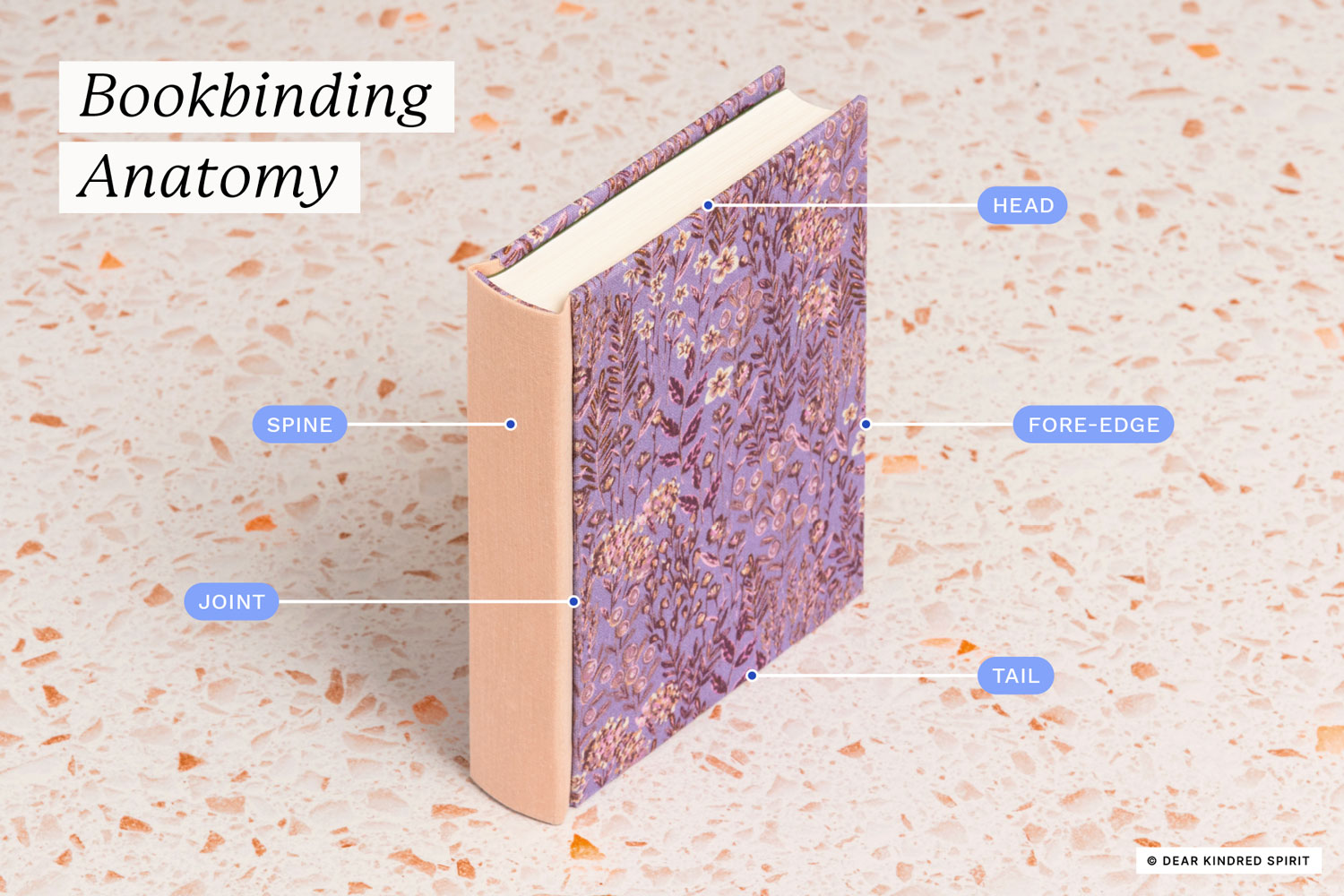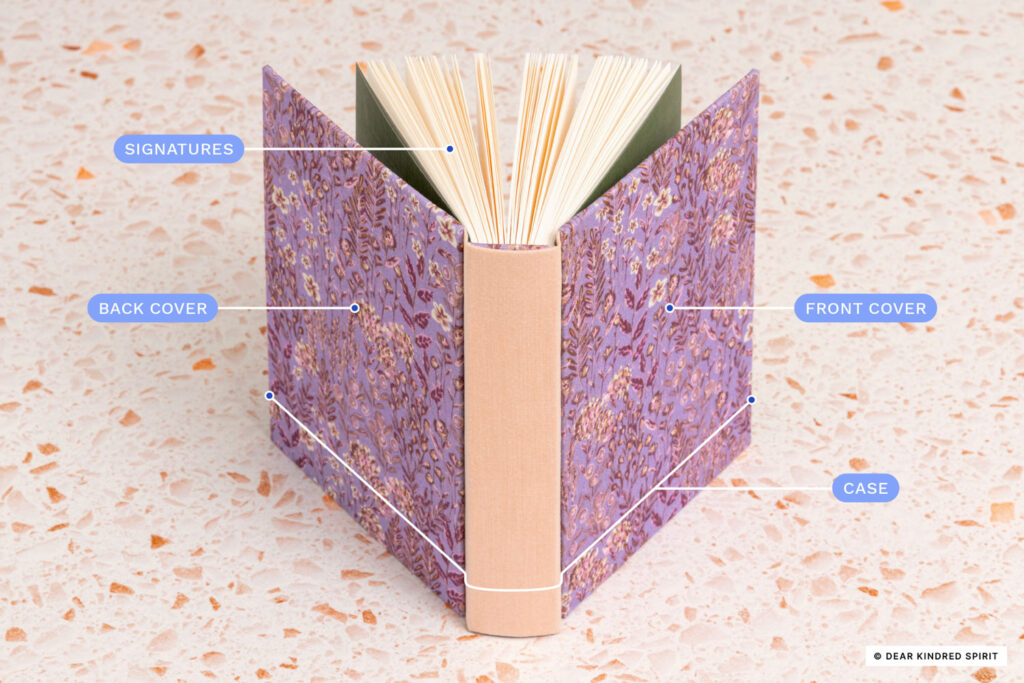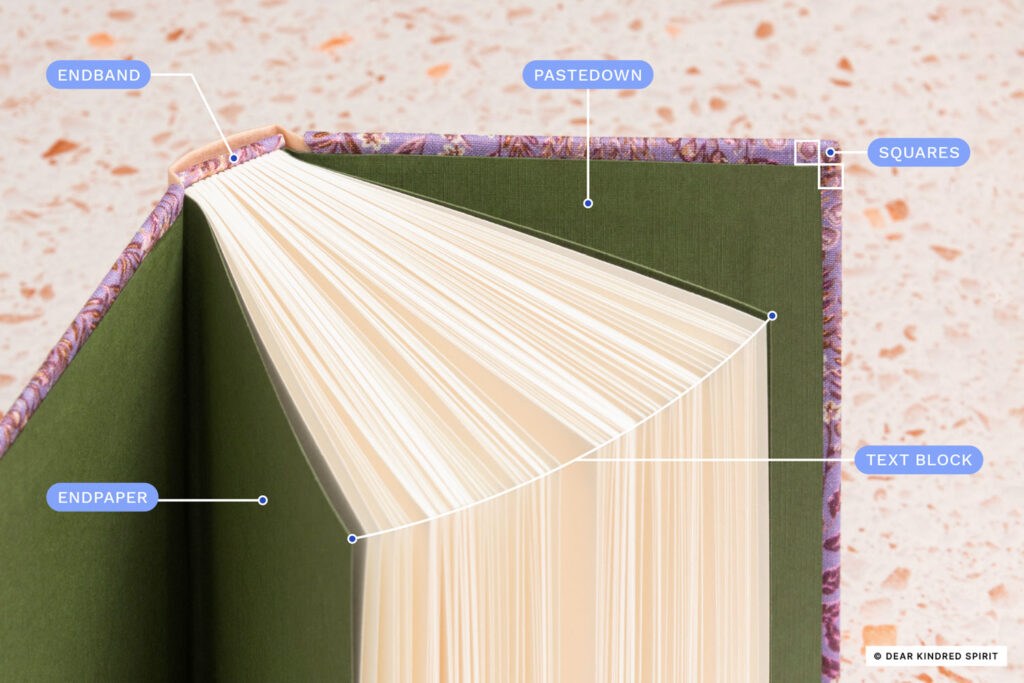
One of my favorite aspects of learning an artisan trade is uncovering the unique language that comes with it. The field of bookbinding has its own special vocabulary that describes everything from a book’s structure to the materials and techniques used to make one. Learning these foundational terms will help you navigate the sea of book making with confidence, whether you’re following an online tutorial, attending a workshop, or simply appreciating a well-made book. In this post, we’ll be taking a closer look at the the basic anatomy of a hardcover book using a 3-Piece Bradel binding I created for our guide.
Head:
Top edge of a book.
Tail:
Bottom edge of a book. Also referred to as the “Foot” of a book.
Spine:
The side of a book where pages or signatures are bound together. The edge that is opposite of the Fore-edge.
Fore-edge:
The edge of the book that can be opened. The side that is opposite of the Spine.
Joint:
A groove that runs parallel to the spine and is formed by the gap between the spine and cover boards. Also referred to as the “Hinge” of a book.

Signature:
A group of sheets that are folded in half and nested inside one another. Also referred to as a “Section.” Depending on its structure, a book can be comprised of a single signature or multiple signatures.
Book Covers:
Consists of the front and back covers of a book that offer added protection to the interior components. Book covers can simply be made of paper or created using studier materials like book board.
Case:
A rigid, protective covering that is comprised of the front and back book covers and spine, often wrapped in paper, fabric, bookcloth, and/or leather.

Endband:
A band that serves both a decorative and protective purpose that can be glued or sewn on the binding edge of a book’s spine at the head and tail ends. Also referred to as “Headbands” and “Tailbands,” respectively.
Endpaper:
A decorative sheet of paper that is attached at the front and back of a text block along the spine, often a slightly thicker weight than the rest of the interior pages. Also referred to as an “Endsheet.”
Pastedown:
The side of the endpaper that is glued to the inside book cover or board.
Text Block:
A text block is comprised of the interior pages and materials of a book without its covers. Commonly includes endpapers, endbands, and spine reinforcements such as mull and other spine lining materials. Also referred to as a “Book Block.”
Squares:
The even margin or overhang of the covers that extend past the endpapers and text block.
I hope you enjoyed this overview of the anatomy of a hardcover book! Of course, this is just the tip of the bookbinding terminology iceberg. In future posts, I’ll be breaking down additional vocabulary that ties into different bookbinding tools, materials, and techniques. Can’t wait to share more with you soon!
Until we bind again,
–Allyx